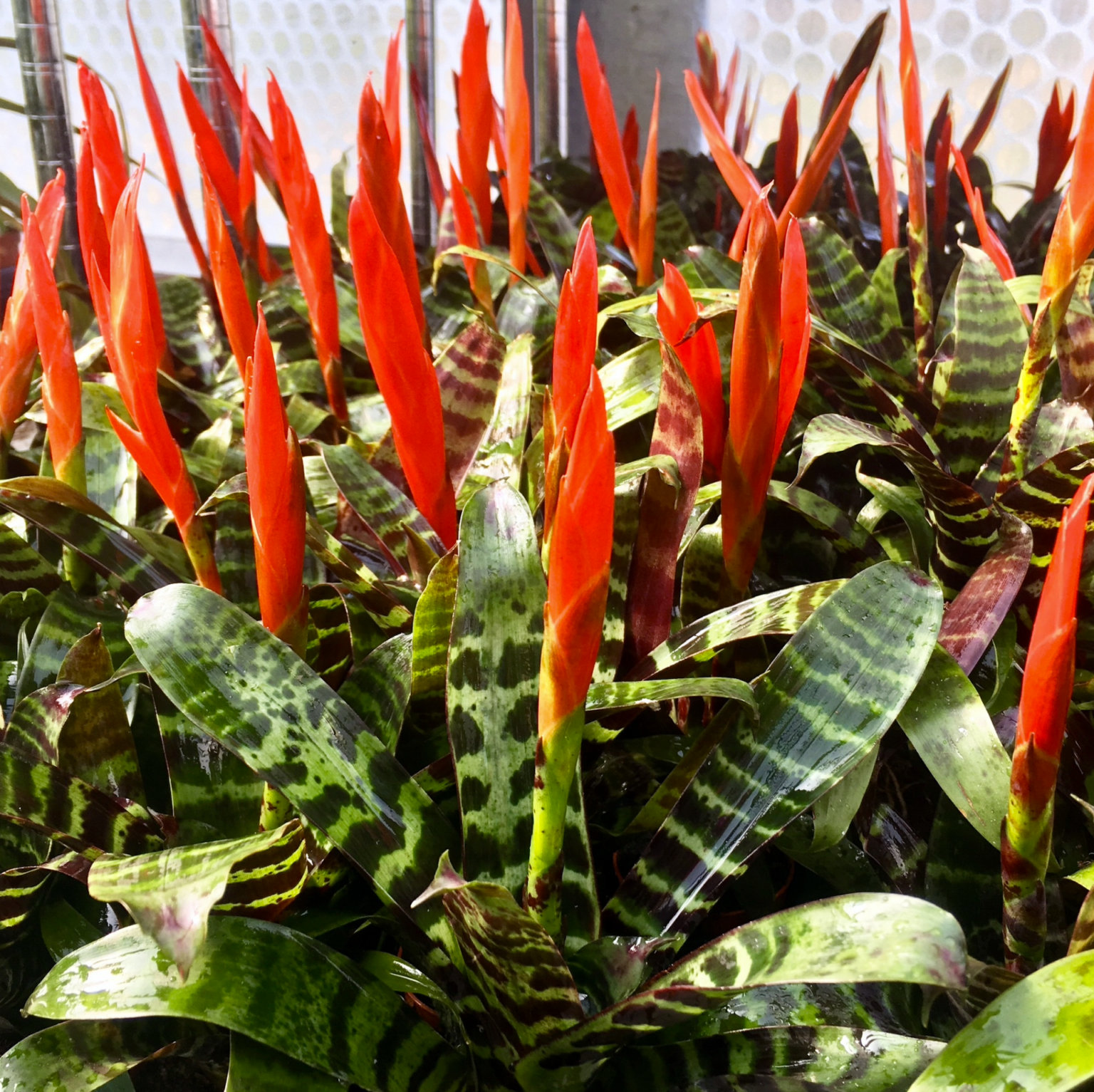Contact us
Sorry, no deliveries.
- mail@applegarthapothecary.com

Vrieseas typically have long, broad, flat leaves. They are smooth and do not feature any spikes or points. The foliage has variegation or banding on the leaves. Most Vrieseas form a rosette with their leaves that create a central tank. Vriesea flower spikes are often tall, broad, and colored with shades of brilliant red. Like many bromeliads, Vrieseas are primarily epiphytic so they take in water and nutrients through the central tank. Their roots act merely as anchors to hold the plant in a potting medium or on a substrate such as a slab of wood. Vrieseas can be fertilized using a slightly acidic fertilizer diluted to a quarter of the recommended strength or less. During the growing season, April through October, thoroughly coat all surfaces of the foliage with the diluted solution at least twice a month.
Because of the epiphytic nature of the Vriesea, they are easily susceptible to crown rot. If the potting medium they are planted in remains soggy or moist, the roots will rot and ultimately destroy the plant. It is important to make sure the tank of the Vriesea remains wet, but not the potting medium. It is also necessary to flush the tank with fresh water weekly. This will prevent build up on the leaves and will also prevent insect development and stagnation. Using rainwater or distilled water to fill the tank will prevent a saline build up on the leaves. You can also provide humidity by misting the entire plant with a spray bottle.

Vrieseas are very adaptable to a wide range of light. They will thrive in shaded areas as well as areas with bright indirect sunlight. Vrieseas are more tolerant of dense shade than other common bromeliads. The more sunlight a Vriesea receives, the more humidity it will need to avoid scorching the leaves. Vriesea foliage will also become more brilliant in color when exposed to more light. Moderate temperatures are preferred by Vrieseas, but they can withstand a range of low and high temperatures from just above freezing to 90F for a short period of time. They will not, however, survive a hard freeze.

Sorry, no deliveries.